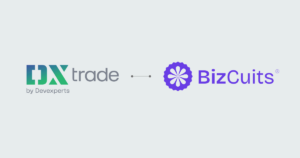What are the working mechanisms of liquidity providers?
When you are going to get your feet wet to the Forex market, liquidity is among the basic notions you need to dive into

Money has absolute liquidity, and newer traders frequently rely on this statement, having no understanding of the difference between Forex and broker liquidity.
What does Forex liquidity mean?
While talking about Forex trading, users exchange one currency for another, and the execution time does matter. The market itself comprises millions of bid and ask deals; meanwhile, a brokerage company may not cooperate with liquidity providers – i.e. get no access to the market major players. What does liquidity provider mean?
Imagine the situation that a broker has 1000 registered traders and has applied to no liquidity providers. That means an order book may contain bid and ask offers of registered traders only. One user needs to buy 100 units of GBP/JPY at 154.01232, while the order book contains only 15 units at this price. As such, traders need to purchase assets higher than the market price, facing losses.
How does liquidity provider work in the same situation? A broker’s order book is expanded by outer bid and ask deals, while a brokerage company serves as a mediator between two sides.
Cooperation models with liquidity providers
Brokers may deal with liquidity providers (LP) according to diverse cooperation models; meanwhile, all the models belong to the No Dealing Desk (NDD) category. The Dealing Desk (DD) principle makes brokers market-makers themselves, applying to no LPs.
The NDD type includes the following models:
- ECN (Electronic Communication Network). A trader gets bid and ask offers delivered to the market automatically and executed by the market price. Meanwhile, price slippage may happen.
- DMA (Direct Market Access). A trader forms an order, getting the possibility to serve as both price giver and price taker. Brokerage companies display transactions to liquidity providers directly.
- STP (Straight-Through Processing). Bid and ask rates are provided by LPs. When a trader creates an order, brokerage companies transfer it automatically to liquidity providers.
This said beginner traders understand how liquidity works, and which brokerage companies to rely on. On the other hand, what about brokers? How can a brokerage company find a reliable and powerful enough liquidity provider?
Useful tips for brokers looking for liquidity providers
Liquidity providers are numerous, and it is a challenging task to select the best one. Take the following important tips into account:
- Deal with “Tier-1” LPs only, as such companies connect brokers with the largest banks and financial institutions.
- Choose large companies that provide services worldwide. Furthermore, it is better to deal with providers that offer many other effective solutions (for instance, White Label trading platforms).
- Apply to LPs that provide clients with high-end customer support, being ready to meet your expectations.
As for the global market, B2Broker is among the best answers on what does liquidity provider mean. The company is always in search of the most progressive and beneficial solutions for brokers.









